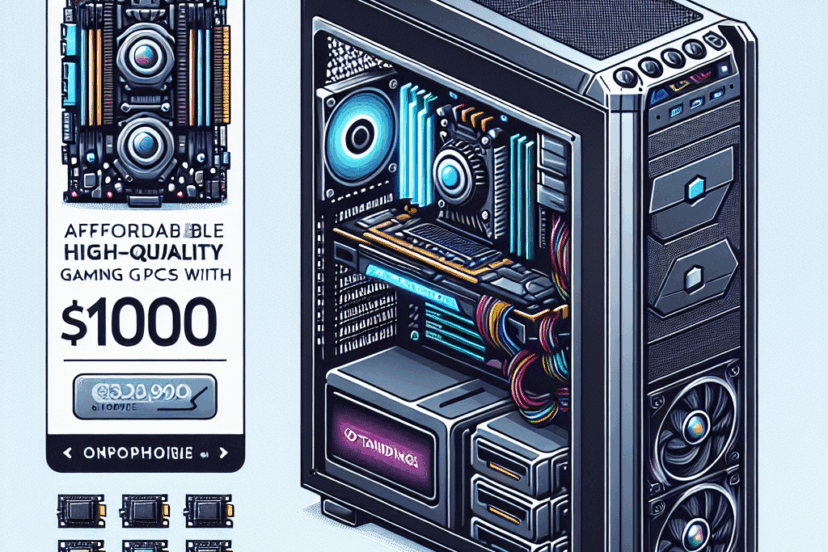FPS Games with the Best Esports Scenes
Evolution of FPS Games in Esports
First-person shooters (FPS) have carved a significant niche within the gaming community, prominently showcasing their presence in the eSports arena. Their competitive nature, combined with fast-paced action, has captivated millions of players and spectators alike.
Key Characteristics of Successful FPS Games
FPS games often feature several core elements that boost their appeal in esports. These include:
- Skill-Based Gameplay: The complexity of mechanics in FPS games, including aim sensitivity, recoil management, and map knowledge, creates a steep learning curve that rewards practice.
- Team Dynamics: Many FPS titles emphasize teamwork by requiring players to cooperate strategically to achieve objectives, which enhances the competitive landscape.
- Spectator-Friendly: Well-designed visuals and fluid gameplay create an engaging experience for viewers, encouraging participation in the esports community.
Prominent FPS Titles in Esports
Several FPS titles have become staples of the esports community, where competitive play thrives, and professional tournaments draw in massive audiences.
1. Counter-Strike: Global Offensive (CS:GO)
Overview: Since its release in 2012, CS:GO has solidified its status as a premier FPS for esports. The game builds on the successful mechanics of previous Counter-Strike titles, combining tactical gameplay with fast reflexes.
Esports Scene: Major tournaments like the ESL One and the Intel Extreme Masters have contributed to CS:GO’s vibrant competitive scene. The game boasts an extensive ecosystem, with teams like Astralis and Natus Vincere consistently dominating the playing field. CS:GO’s economic management, map control, and teamwork highlight skilled gameplay, resulting in high-stakes competitions.
Key Tournaments:
- Major Championships: Typically featuring a $1 million prize pool, these tournaments attract the best teams globally.
- Regional Leagues: ESL Pro League and FLASHPOINT provide pathways for teams to compete at various levels, fostering talent.
2. Call of Duty (CoD) Series
Overview: The Call of Duty series has undergone numerous iterations, each contributing to the evolution of FPS gameplay. Call of Duty: Modern Warfare and Warzone have become particularly notable in the eSports realm.
Esports Scene: The Call of Duty League (CDL) is a highly organized competition structure, where franchises compete in a league format similar to traditional sports. The competitive nature of modes like Search and Destroy and Hardpoint has invigorated the community.
Key Tournaments:
- Call of Duty Championship: This annual event crowns the best teams globally, with millions in prizes and beyond.
- Online Leagues: The CDL features various stages, with numerous opportunities for players and teams to showcase their skills.
3. Overwatch
Overview: Blizzard Entertainment’s Overwatch redefined the FPS genre by adding hero-based mechanics and a vibrant universe.
Esports Scene: The Overwatch League (OWL) set a new standard for professional gaming with its city-based franchise model. Teams like the San Francisco Shock and London Spitfire have provided intense gameplay and rivalries. Overwatch is celebrated for its diverse cast of characters, pushing for strategic depth in team compositions.
Key Tournaments:
- Overwatch League Grand Finals: This championship event sees top teams challenge for the title, accompanied by substantial prize pools.
- Contenders Series: A developmental league aimed at nurturing upcoming talent and preparing them for OWL.
4. Rainbow Six Siege
Overview: Ubisoft’s Rainbow Six Siege emphasizes tactical gameplay and strategic destruction. Team dynamics and map control define this unique FPS.
Esports Scene: Rainbow Six Siege has seen a significant rise in its eSports presence, particularly with events like the Six Invitational. The game’s reliance on tactical gameplay, communication, and unique operatives offers a fresh experience.
Key Tournaments:
- Six Invitational: The marquee event for Siege, drawing teams from all over the globe for intense competition.
- Pro League: A structured competitive scene that allows teams to compete in regular seasons with playoffs.
5. Apex Legends
Overview: Released in 2019, Apex Legends blended the battle royale format with hero shooter mechanics, introducing unique legends with varying abilities.
Esports Scene: The Apex Legends Global Series (ALGS) highlights the potential for competitive gameplay. Teams utilize the abilities of various legends, creating dynamic strategies that resonate with both players and viewers.
Key Tournaments:
- ALGS Championship: A yearly event featuring top teams, focused on high-stakes battle royale play.
- Online Tournaments: Various community-hosted tournaments contribute to the ecosystem, offering opportunities for exposure.
The Role of Streaming Platforms
Streaming platforms like Twitch and YouTube Gaming have revolutionized how players and fans engage with FPS games. These platforms enable players to showcase their skills while providing audiences with live commentary, enhancing the overall experience.
Audience Engagement and Community Building
The vibrant communities surrounding each game foster engagement through forums, Reddit threads, and social media platforms. Esports personalities and players often interact with their followers, encouraging fan participation during tournaments and building loyalty.
The Impact of Sponsorships and Organizations
Major sponsorships, from hardware manufacturers to energy drinks, have flooded the FPS esports scene. Sponsorships are vital as they provide the financial backing needed for tournaments and organizations. Teams branded by significant companies have greater visibility and often achieve stronger performance due to enhanced resources.
Evolution of Competitive FPS
As technology advances, FPS games continue to evolve. Features such as virtual reality (VR) and augmented reality (AR) are beginning to shape the future of FPS gaming. Meanwhile, machine learning algorithms are being utilized to analyze gameplay and improve player performance.
Challenges in the FPS Esports Scene
Despite the growing popularity, FPS esports face challenges, including:
- Cheating and Fair Play: Cheating undermines the integrity of competitive play, leading developers to implement anti-cheat programs.
- Game Balance: Ensuring competitive balance is crucial; developers must regularly update weapons and mechanics to maintain fairness.
- Viewer Accessibility: Making the game accessible to newcomers while retaining depth for veterans remains a balancing act.
Summary of Competitive FPS Landscape
FPS games continue to dominate the esports arena, with many titles continuously evolving to engage both players and audiences. The integration of tournaments, streaming, and community activities cultivates a thriving ecosystem that celebrates competition, skill, and teamwork. As the landscape grows, FPS esports will likely expand into uncharted territories, fostering new opportunities for players and fans alike.




